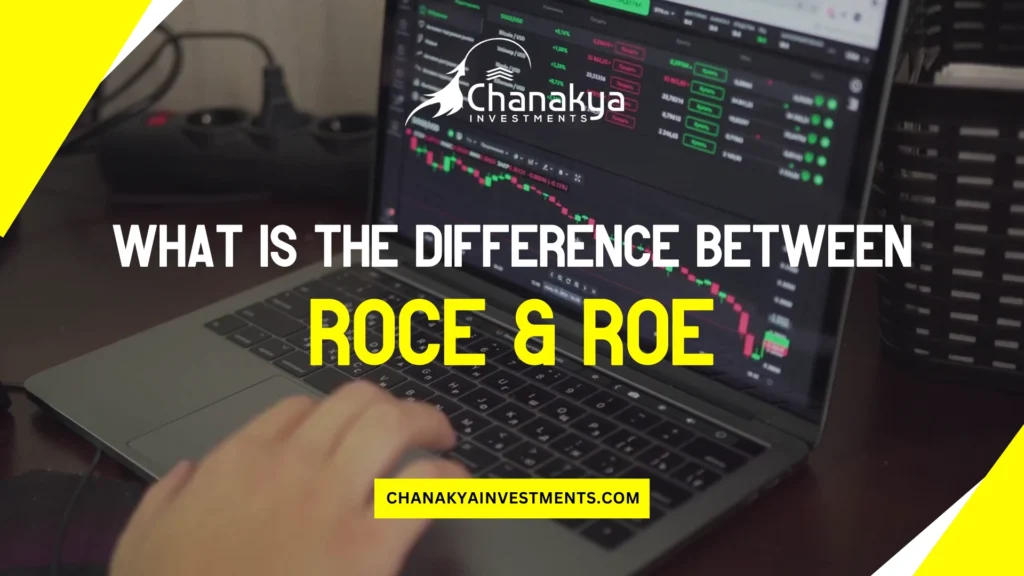
When it comes to evaluating the performance of a company, investors and analysts rely on key financial ratios to measure how efficiently the company generates profits from its resources. Among these, ROCE and ROE are two crucial metrics that provide valuable insights into how well a business is utilizing its capital and shareholders’ funds.
This blog explains various aspects of ROCE and ROE along with their methods of calculations, indicators, and the reasoning behind why an investor and a business owner need to be concerned about them.
What is Return on Capital Employed (ROCE)?
The capital employed is the sum total of debt and equity, and ROCE is a measurement of how good the business is in using its total capital to generate profits. It gives an idea of the amount of profit generated for every rupee (or dollar) of capital employed in the business.
ROCE formula is:
Where:
- EBIT is the operating profit of the company
- Capital Employed = Total Assets – Current Liabilities (or Shareholders’ Equity + Debt)
What does ROCE indicate?
- A higher ROCE means the company is generating better returns on the capital invested in the business.
- It helps compare companies that have different levels of debt and equity, making it useful in industries where companies borrow significantly.
- ROCE is ideal for assessing capital-intensive businesses like manufacturing, utilities, or telecom.
What is Return on Equity (ROE)?
Return on Equity measures the profitability of a firm in relation to shareholders’ equity. In simpler terms, it indicates the efficiency with which the company is using shareholders’ capital to generate net profit.
Formula for ROE:
Where:
- Net Profit is the profit made after tax.
- Shareholders’ Equity consists of share capital and reserves (retained earnings).
What does ROE indicate?
- If a company has a very high return on equity, it implies that it earns fairly good profits from the funds that shareholders have placed in it.
- It helps investors to see how well their capital has been utilized.
- It would be more important when comparing companies within the same industry or sector.
ROCE vs ROE: What’s the Difference?
| Aspect | ROCE | ROE |
| Measures | Returns on total capital (debt + equity) | Returns on shareholders’ funds |
| Useful for | Evaluating capital efficiency overall | Evaluating shareholder returns |
| Includes debt? | ✅ Yes, it considers debt and equity | ❌ No, only equity |
| Best for | Capital-intensive companies | Asset-light or equity-heavy companies |
Example:
Imagine two companies:
- Company A has high debt but uses it effectively to generate profits.
- Company B has no debt and relies only on equity.
- ROCE will highlight how well Company A manages its borrowed and owned capital.
- ROE will show how well Company B is rewarding its shareholders.
Why Should Investors Track ROCE and ROE?
- Assess management efficiency – Both ratios reveal how well the management is Assess management efficiency – Both are indicators of how well management is utilizing their resources.
- Identify strong businesses – Consistently higher ROCE and ROE show narrow or wide competitive advantages (or “moats”).
- Compare industry peers – Useful in comparing companies within one sector.
Note: Sometimes, a sky-high ROE is because a company has taken too much debt and thereby lowered its equity. It might be a sort of artificial inflation of the ROE. That’s why ROCE and ROE must be looked at together.
Key Takeaways
- ROCE indicates how well a company is generating profits from all its capital (debt + equity).
- ROE indicates how well a company generates profits for its shareholders.
- Both are great tools for investors to analyze how profitable or efficient a company is.
- These ratios are better analyzed if compared with industry averages and the company’s past performance.
Conclusion
In fact, both ROCE and ROE are significant indicators of the financial scorecard of a company. ROCE looks at returns generated in respect of all sources of capital, whereas ROE analyzes shareholder wealth creation. From an investor perspective, analyzing both would yield a much better insight into how a com
Want to Know More Details ,Please Click Here
